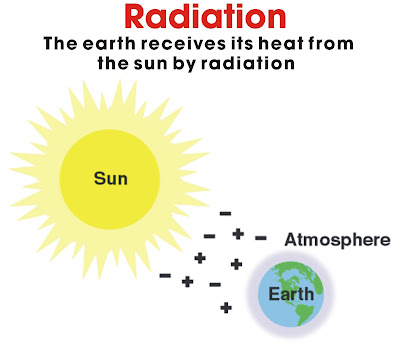The earth receives its heat from the sun by radiation. The heat rays from the sun are turned into heat as they strike an object which will absorb some or all of the heat rays (opaque or translucent material). The rays heat the air very little as they pass through it and they heat a glass windowpane to a very minimum as they pass through it. Heat rays generate more heat on striking dark-colored objects than when striking light-colored and polished surfaces.
Any heated surface loses heat to cooler surrounding space or surfaces through radiation. Likewise, a cold surface will absorb radiated heat which may strike it.
Some space heating systems depend on radiated heat in ceilings, walls or floors to heat a space or room.
Any heated surface loses heat to cooler surrounding space or surfaces through radiation. Likewise, a cold surface will absorb radiated heat which may strike it.
Some space heating systems depend on radiated heat in ceilings, walls or floors to heat a space or room.
Tags:
Basics of Refrigeration
